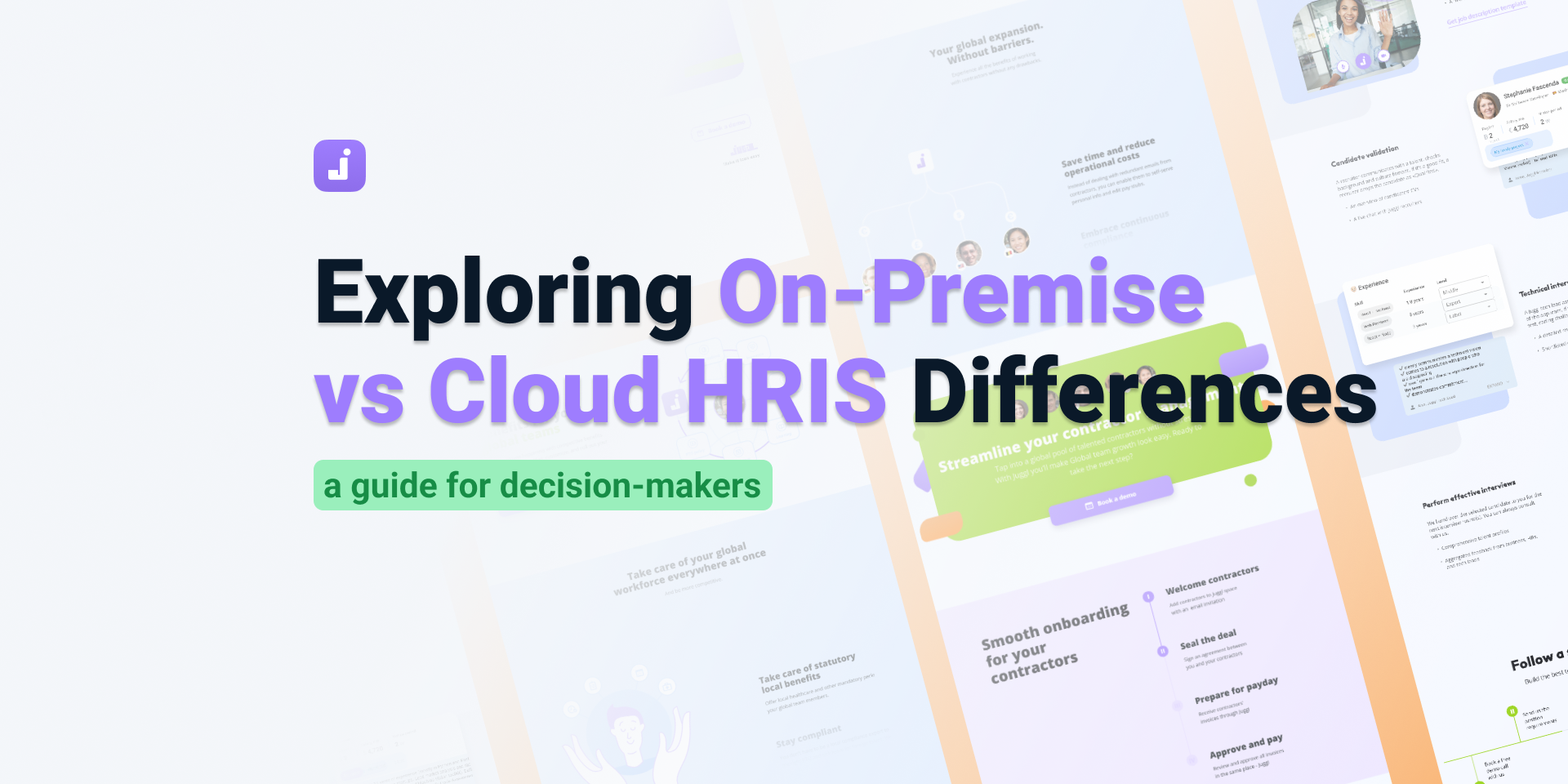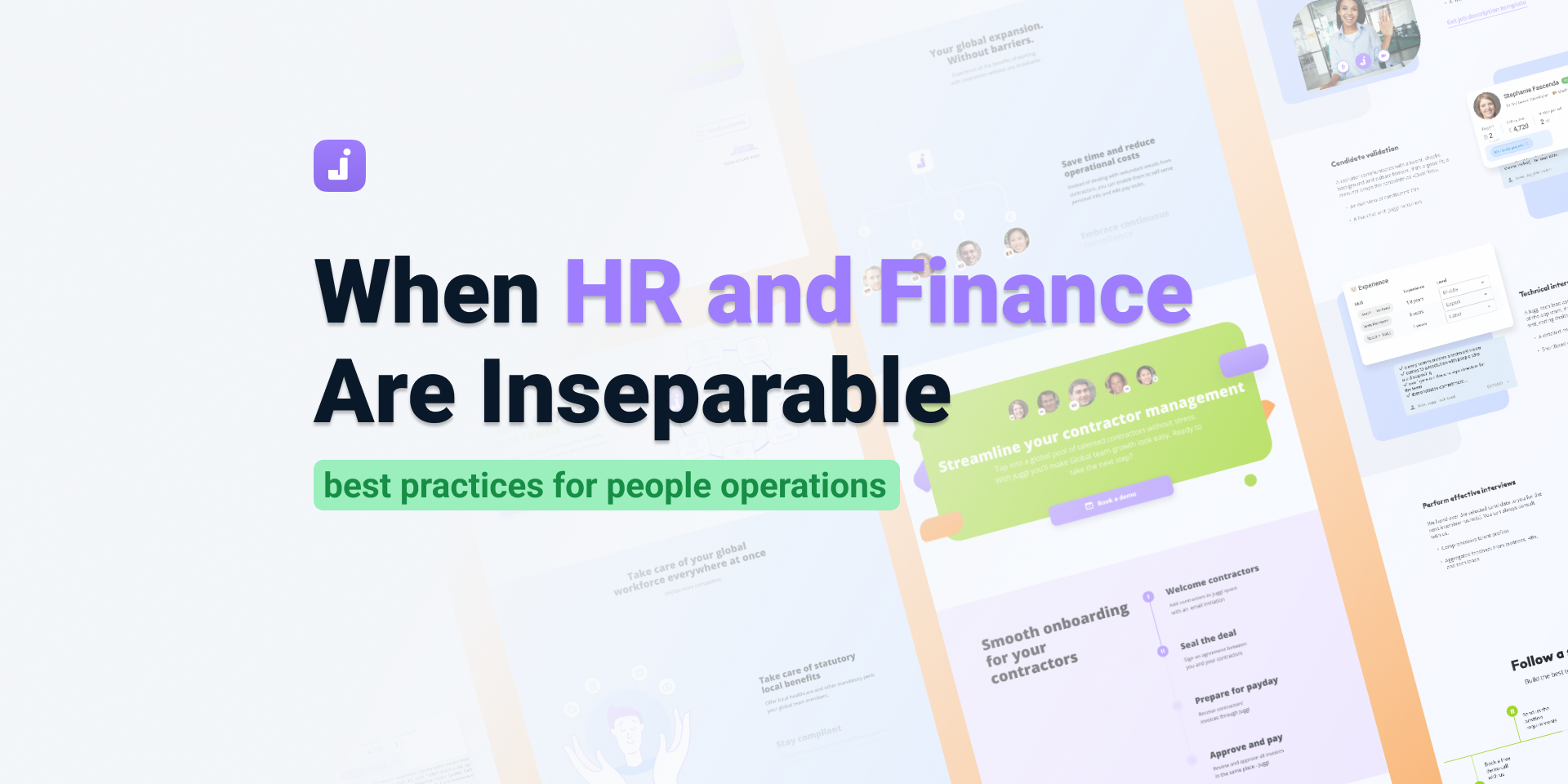How Payroll Management in HR Drives Employee Satisfaction and Retention
Payroll is a critical aspect of employee satisfaction at any company. After all, the motivation to work always comes down to earning money, and it’s only natural to want to receive your compensation on time and in correct amounts.
This is exactly how accurate and timely payroll can boost morale and trust within the workforce. Employees who feel valued are more likely to stay. As an HR professional, you must understand the impact of payroll on overall employee experience if you want to see positive variables in your reports.
In this article, we’ll explore how effective payroll management enhances employee satisfaction and retention, which tools streamline payroll operations, and how Juggl can help your team enhance employee experience.
Is Payroll Management Part of HR?
Payroll management is often perceived as simply calculating wages and bonuses before transferring the numbers to Accounting. However, there is more to it: payroll is tightly intertwined with HR responsibilities.
Payroll involves various tasks, from maintaining employee records to executing payroll runs. The key aspects of payroll management include ensuring accurate payments, compliance with tax laws, and managing deductions. These tasks are usually undertaken by HR.
In some companies, HR collaborates with Finance departments for payroll tasks. However, HR remains central due to its direct impact on employees.
Key Components of Payroll Management
While the term “payroll” often conjures images of salary slips, it actually covers a comprehensive set of processes that go beyond issuing payments. HR plays a vital role in these processes because payroll is directly linked to both employee satisfaction and organizational efficiency.
Key components include:
- Wage and salary calculations – determining gross and net pay based on hours worked, overtime, and contractual agreements.
- Payroll tax compliance – accurately calculating and remitting taxes in line with current legislation to avoid penalties.
- Benefits and deductions management – administering health insurance, pensions, leave payouts, and other voluntary or statutory deductions.
Together, these elements ensure employees receive the correct pay on time, which fosters trust and strengthens the employer-employee relationship.
Who Owns Payroll Processes?
Ownership of payroll processes varies between organizations, but HR should always maintain clear oversight. Even when Finance handles the technical aspects, HR remains the bridge between payroll data and employee experience.
When HR has full visibility into payroll workflows, they can:
- Quickly address discrepancies or concerns raised by employees
- Ensure compliance with labour laws and internal policies
- Integrate payroll data with performance, attendance, and benefits records for a holistic HR strategy
In short, while Finance might run the numbers, HR ensures payroll supports both employee well-being and organisational goals. A clear insight into payroll workflows empowers HR to identify trends, prevent errors, and maintain a transparent, trust-based culture.
Payroll Analytics: HR's Key to Understanding Your Team
Like any financial operation, payroll can't run without proper analytics. Payroll analytics provide invaluable insights for both Finance and HR professionals. By analyzing payroll data, HR can identify trends that impact employee satisfaction and productivity, as well as make informed decisions that improve retention.
Measuring Employee Satisfaction
Accurate and timely payroll is a cornerstone of employee trust. When salaries, bonuses, and benefits are processed without errors, it signals that the organization values its people. On the other hand, frequent mistakes or delays can quickly undermine morale.
Payroll analytics helps HR track payment accuracy, spot recurring issues, and understand how payroll efficiency affects employee morale. Combined with surveys and feedback, this data can provide a clearer picture of overall job satisfaction.
Identifying Patterns in Payroll Data
Payroll reports can reveal a lot of insights into your team. Specifically, they can highlight patterns that affect business performance. For example:
- Overtime trends may point to workload imbalances or understaffing.
- Increased use of sick leave could signal burnout or workplace stress.
- Changes in bonus distribution might reflect shifts in performance or company priorities.
By interpreting these patterns, HR can work proactively with managers to address concerns before they impact retention. Payroll analytics transforms raw financial data into actionable insights, helping HR create fairer policies, improve resource allocation, and support a healthier work environment.
Integrated HR and Payroll Solutions
Managing HR and payroll as separate functions can lead to inefficiencies, duplicated work, and data inconsistencies, which jeopardize the whole company's operations workflow. An integrated HRIS and payroll solution brings these functions together in a single system, streamlining processes and improving accuracy. This allows HR teams to spend less time on administrative tasks and more time on strategic initiatives that boost employee engagement and retention.
Advantages of an Integrated Approach
- Improved data accuracy – when employee records, attendance, benefits, and payroll information are stored in one platform, the risk of errors from manual data entry or system transfers is greatly reduced.
- Faster processing – integrated systems automatically update payroll with any changes in employee data, such as promotions, relocation, or leave records. This helps save time and ensures that pay runs are always up to date.
- Better employee experience – employees can access payslips, leave balances, and benefits information through self-service portals, increasing transparency and trust.
- Data-driven decision-making – a shared database allows HR to link payroll trends with performance, attendance, and turnover data, enabling more informed workforce planning.
To Automate or Not To Automate?
When it comes to payroll, businesses face a key decision: stick with manual processing or invest in HRIS payroll automation. Both methods have advantages, and the right choice depends on a company’s size, complexity, and growth plans. Let's take a closer look at each option:
Manual Payroll Processing
Manual payroll often involves spreadsheets, physical records, and hands-on calculations. Information is transferred via email, calendars, dedicated lists, etc.
- Offers full control over each step
- The initial cost is low
- Flexibility for very small teams with simple pay structures
Best suited for: startups or micro-businesses with only a few employees, minimal payroll variations, and limited budget for software.
Automated Payroll Processing
Automated systems handle calculations, employee information updates, and reporting with minimal human input.
- Saves time dramatically
- Reduces errors and eliminates the risk of manual error
- Integrates with HR data for smoother operations.
Best suited for: growing businesses, teams with varied pay structures, or organizations that want to reduce administrative workload and increase accuracy.
While manual processing may work for very small companies, it becomes increasingly challenging as headcount grows. The risk of errors and time drain rises quickly. Therefore for most organizations, automation is the natural next step when expanding. It not only improves efficiency but also supports scalability, allowing HR teams to focus on strategic priorities instead of repetitive calculations.
Enhancing Employee Experience through HRIS and Payroll
A well-chosen Human Resource Information System (HRIS) can completely transform the way payroll is managed by administration and experienced by employees. When HRIS and payroll systems are integrated, payroll becomes more than an administrative necessity. Instead, it turns into a seamless, transparent, and employee-friendly process.
Rather than relying on multiple systems or manual updates, HRIS consolidates all workforce data into a single source of truth. This means that dedicated payroll teams have immediate access to accurate and current information, and this, in its turn, decreases the chance of errors and minimizes employee dissatisfaction.
Role of HRIS in Payroll Management
HRIS plays a pivotal role in connecting the dots between HR processes and payroll accuracy. All key data points such as employee profiles, attendance, benefits, and role changes, flow automatically into payroll calculations. As a result, HRIS impacts the operations by ensuring:
- Real-time accuracy: any change, from a shift in working hours to a promotion, is instantly reflected in payroll records.
- Error reduction: minimizing manual input reduces the risk of miscalculations or overlooked updates.
For employees, this means fewer pay discrepancies, faster issue resolution, and a stronger sense of confidence in the organization’s ability to manage compensation fairly and correctly.
Features of Effective Employee Self-Service Systems
Modern HRIS platforms often include employee self-service (ESS) portals. They are tools that allow staff to access and manage their payroll and HR information anytime, anywhere. Features of an effective ESS include:
- On-demand payslip and tax form access: employees can download or view documents without waiting for HR intervention.
- Integrated leave and attendance tracking: reduces disputes by linking attendance directly to payroll calculations.
- Benefit management: staff can enroll, modify, or review benefits in real time.
- Personal data management: employees can update banking details, contact information, or dependents instantly, reducing admin delays.
- Mobile accessibility: ensures employees can manage their information from any device.
When employees have control and visibility over their payroll data, it fosters transparency, reduces misunderstandings, and improves overall job satisfaction.
How Juggl Streamlines Payroll Management for HR Teams
Juggl is designed to take the complexity out of payroll, giving HR teams the tools they need to work smarter, not harder. By combining HR and payroll in a single system under a single interface, Juggl removes the need for manual data transfers, which ensures every update is instantly reflected across all systems.
The key ways Juggl simplifies payroll for HR include:
- Automated calculations: from gross pay to bonus deductions, Juggl handles every step with unlimited customizable algorithms.
- Real-time data integration: employee changes, attendance records, and benefits updates flow directly into payroll, eliminating inconsistencies.
- Self-service system for employees: staff can view payslips, request leaves, update personal information, and check benefits without HR intervention.
- Customizable reporting – HR teams can generate detailed payroll reports for management, audits, or budgeting in just a few clicks, and the integrated AI ensures the insights are always at hand.
By taking over the entire process, Juggl frees HR teams from repetitive admin work, giving them more time to focus on strategic initiatives that improve employee satisfaction and retention.









